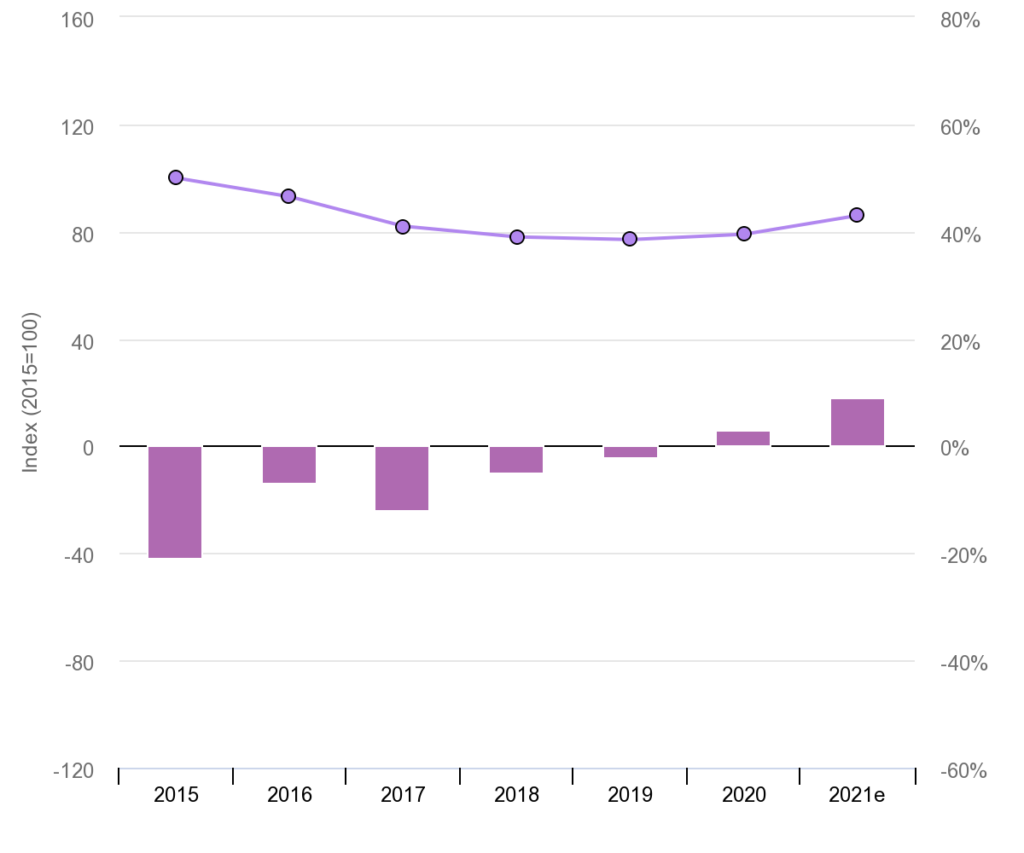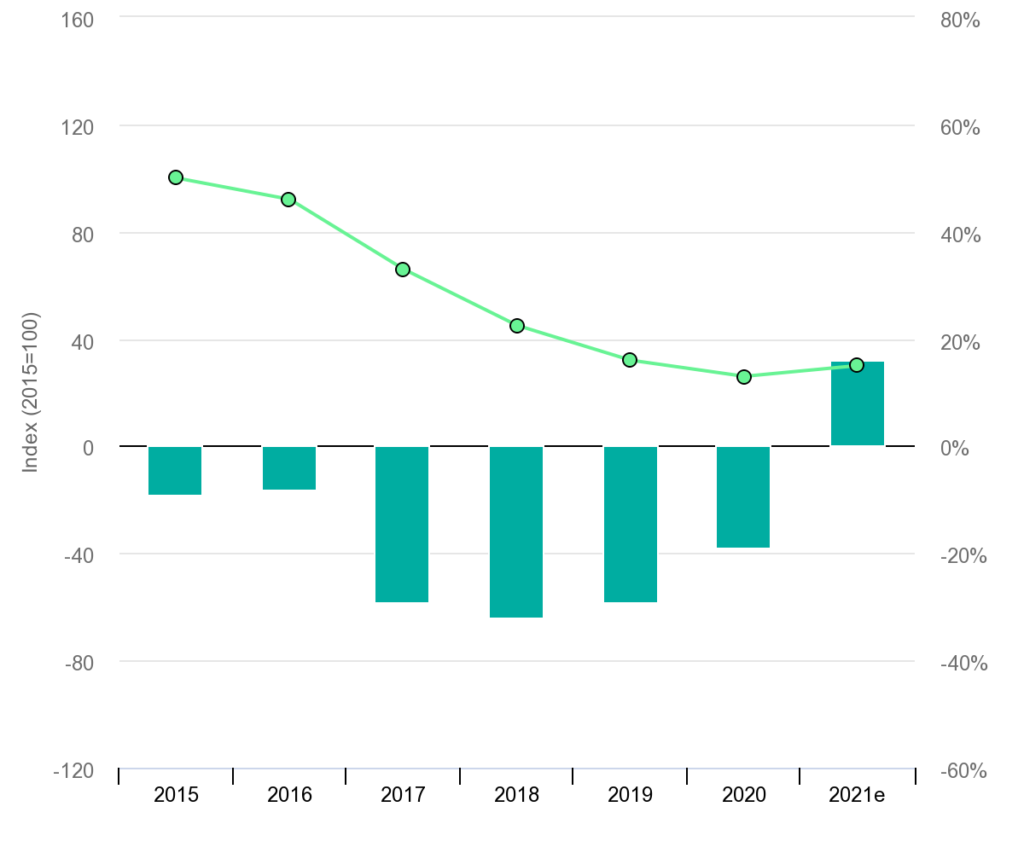Critical minerals threaten a decades-long trend of cost declines for wind and solar
Prices of key minerals and metals for wind, solar, and battery storage have spiked in recent months, according to the International Energy Agency (IEA).
The cost of many minerals and metals that are essential for these technologies has recently soared due to a combination of rising demand, disrupted supply chains, and concerns around tightening supply. The prices of lithium and cobalt more than doubled in 2021, and those for copper, nickel, and aluminum all rose by around 25 percent to 40 percent.
The price trends have continued into 2022. The price of lithium has increased an astonishing two-and-a-half times since the start of the year. The prices of nickel and aluminum — for which Russia is a key supplier — have also kept rising, driven in part by Russia’s invasion of Ukraine. For most minerals and metals that are vital to the clean energy transition, the price increases since 2021 exceed by a wide margin the largest annual increases seen in the 2010s.
From batteries to solar panels and wind turbines, the rapid cost reduction trends seen over the past decade mostly reversed in 2021, with prices for wind turbines and solar PV modules up by 9 percent and 16 percent, respectively, as you can see in the graphs below.

Solar declines, which had been significant in 2017, 2018, and 2019, began to backslide in 2020, with costs increasing by 16 percent in 2021. This trend seems set to continue in 2022.

Prices for lithium-ion batteries are likely to see a major uptick in 2022. In China, relentless rises in lithium prices are already translating into higher prices for electric vehicles, with Tesla, BYD, and Xpeng announcing price hikes of 2 percent to 9 percent in March 2022.
These trends are unsurprising to anyone with a basic grasp of economics. By mandating and subsidizing wind turbines, solar panels, and electric vehicles, we have created an enormous, artificial market for the metals and minerals needed to build them. This increase in demand has led to rising costs of raw materials, causing wind and solar prices to rise.
However, many of the same special interest groups pushing wind and solar told us that prices wouldn’t rise, and that we would not need new mining in Minnesota to help to meet the demand for wind and solar facilities. These talking points have been proven wrong, and the global supply crunch for essential minerals is taking a toll on wind and solar prices.